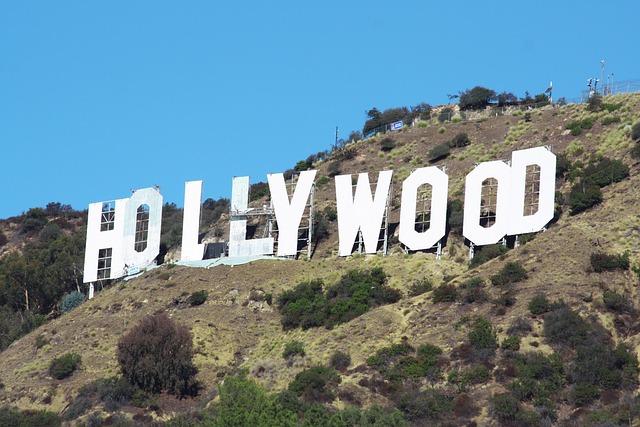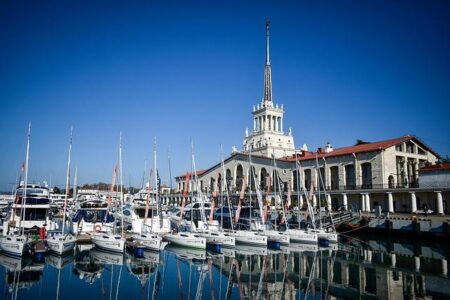Rebuilding Los Angeles: Strategies for Resilience Amid Escalating Wildfire Threats
Evaluating Ecological Damage and Embracing Lasting Recovery
As wildfires increasingly ravage the Los Angeles area, a thorough understanding of their environmental toll is vital for effective restoration. Recovery initiatives must commence with detailed ecological assessments to pinpoint fragile habitats and prioritize interventions that prevent further harm. Key factors such as soil erosion, water contamination, and the loss of indigenous plant species require close examination to avert subsequent hazards like mudslides and flash floods. Success hinges on collaborative efforts among environmental experts, municipal agencies, and local communities to craft restoration strategies that harmonize immediate rebuilding demands with long-term ecosystem health.
Sustainability should be the cornerstone of all reconstruction projects,incorporating cutting-edge green technologies and nature-based solutions to minimize carbon emissions while fostering habitat regeneration. Essential focus areas include:
- Replanting native flora to boost biodiversity and stabilize landscapes
- Installing erosion prevention systems such as contour terraces and sediment traps
- Enhancing water efficiency through rainwater capture and permeable pavements
- Integrating renewable energy sources in rebuilt neighborhoods to cut fossil fuel reliance
The following table compares various restoration methods by their environmental impact, cost-effectiveness, and benefits to the community, providing a framework for informed policymaking:
| Restoration Method | Environmental Benefit | Cost Efficiency | Community Impact |
|---|---|---|---|
| Native Plant Reforestation | Significant | Moderate | Improved air quality and habitat diversity |
| Erosion Control Installations | Moderate | High | Decreased risk of landslides |
| Water Conservation Infrastructure | Moderate | Moderate | Enhanced water resource management |
| Renewable Energy Integration | High | Variable | Lower emissions and energy expenses |
Enhancing Structural Durability to Resist Future Wildfires
Fortifying Los Angeles’ built surroundings is crucial to reduce wildfire damage. Incorporating fire-retardant building materials such as Class A fire-rated roofing and non-flammable siding can considerably lower ignition risks and extend building lifespans. Additionally, modernizing utility infrastructure by burying power lines underground or equipping them with smart sensors can prevent electrical faults that often spark fires. Thoughtful landscaping of public areas, including parks and green corridors, can serve as natural firebreaks, slowing wildfire spread and creating defensible zones for residents.
A comprehensive,multi-layered approach involving urban planners,emergency services,and policymakers should include:
- Enforcing zoning regulations that limit dense development in high-risk wildfire zones
- Designing and maintaining clear evacuation pathways and communication networks
- Allocating dedicated funds for rebuilding with resilient technologies post-fire
- Upgrading firefighting resources with advanced equipment and specialized training
| Infrastructure Component | Recommended Upgrade | Anticipated Advantage |
|---|---|---|
| Residential Roofs | Class A fire-resistant materials | Lowered risk of fire spread |
| Electrical Systems | Underground wiring and automated shutoffs | Reduced fire ignition incidents |
| Community Parks | Firebreak landscaping | Slower wildfire advancement |
Community-Focused Recovery Initiatives for Displaced Populations
Central to Los Angeles’ post-wildfire recovery is empowering displaced individuals through programs that emphasize community involvement and resilience-building. Recovery must transcend temporary housing solutions by fostering a renewed sense of community and stability. Establishing community advisory councils that include affected residents, local officials, and service providers ensures recovery efforts are responsive and inclusive. Vital services should encompass mental health support, vocational training, and accessible healthcare, enabling families to reconstruct not only their homes but their livelihoods.
Effective recovery demands coordinated partnerships among municipal bodies, nonprofits, and private sector stakeholders.Key program areas include:
- Housing Assistance: Accelerate affordable housing development and provide rebuilding aid
- Economic Recovery: Offer grants and workforce training to revitalize small businesses in fire-affected zones
- Health Outreach: Expand mobile clinics and mental health services to address trauma and displacement effects
- Community Spaces: Reconstruct shared venues that promote social cohesion and healing
| Recovery Program | Main Objective | Projected Impact |
|---|---|---|
| Community Advisory Councils | Inclusive Planning | More effective, tailored recovery efforts |
| Mental Health Services | Trauma Support | Improved community resilience and wellbeing |
| Affordable Housing Initiatives | Resident Stability | Lower rates of homelessness and displacement |
| Economic Stimulus Grants | Local Economy Boost | Job creation and business revitalization |
Harnessing Advanced Technologies to Optimize Emergency Response
The adoption of innovative technologies is transforming Los Angeles’ wildfire emergency management. Tools such as real-time satellite monitoring, drone reconnaissance, and AI-driven fire spread models enable responders to identify critical hotspots and predict fire trajectories with greater precision. Cities utilizing these technologies have reported up to a 30% improvement in response times, directly contributing to lives saved and property preserved. Enhanced communication platforms, including mobile alert systems and community engagement apps, facilitate rapid information sharing between authorities and residents, ensuring timely warnings and coordinated action.
Data-centric approaches also improve resource deployment efficiency during emergencies.Centralized incident management systems allow officials to track firefighting assets, shelter availability, and medical support in real time.The table below highlights key technologies revolutionizing wildfire response:
| Technology | Primary Function | Benefit |
|---|---|---|
| Satellite Imagery | Monitoring fire boundaries | Precise containment mapping |
| Drone Surveillance | Accessing remote areas | Real-time situational awareness |
| AI Fire Spread Models | Predicting fire movement | Early evacuation alerts |
| Mobile Alert Platforms | Community notifications | Accelerated public safety communication |
Conclusion: Building a More Resilient Los Angeles
Confronted with the escalating threat of wildfires, Los Angeles stands at a pivotal moment to rebuild with foresight and resilience. Success will depend on integrated efforts spanning sustainable land management, resilient infrastructure, community empowerment, and cutting-edge technology adoption. While the recovery journey is challenging, the insights gained from recent disasters offer a unique opportunity for the city to strengthen its defenses and adapt to an increasingly unpredictable climate future.




